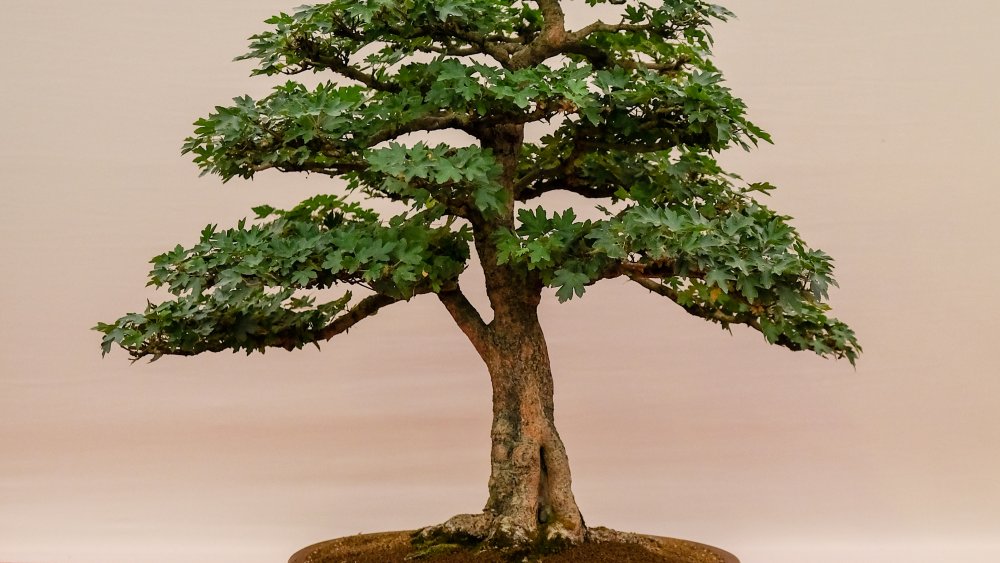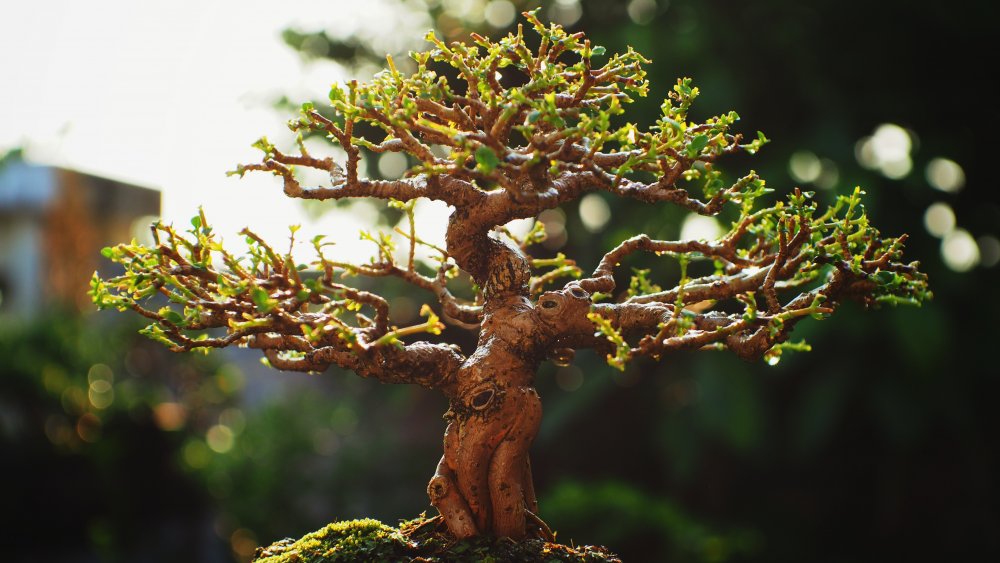What You Didn't Know About Bonsai Trees
At first glance, bonsai trees look odd. After all, how can something that small look like a full-fledged tree? But bonsais are far more interesting than just a miniature version of an elm.
First, bonsais are not a type of tree. Instead, it's an art form traditionally practiced in Japan and influenced by Buddhism. The Bonsai Outlet explained Japanese scholars borrowed and refined the art from Chinese academics and noblemen, who engaged in a similar activity, called pensai. The goal of bonsai is to imitate the shape and scale of a full-sized tree.
According to Mythical Bonsai, any type of tree can become a bonsai. The most commonly used species are maple, elm, juniper, and ficus. The difference between regular-sized versions of those trees and bonsais depends on when germinated seeds are placed in a container. Bonsais can be extremely small, or quite large, too. The smallest bonsais in the world measure just one to three inches tall, while the largest, officially, stands at 80 inches. Mythical Bonsai reports a 600-year old red pine bonsai that's nearly 200 inches, but traditionalists don't like to count that as a miniature representation of nature.
They're more than just tiny trees in pots
While anyone can get into the art of bonsai, some bonsai fetch large sums of money and are included on lists of the most expensive plants in the world. Bonsai Tree Gardener reported a bonsai sold for $1.3 million in auction during a recent International Bonsai Convention in Takamatsu. That bonsai was a centuries-old white pine. That's not even the most shocking bonsai story, per Mythical Bonsai. In 2019, a Japanese couple came home and saw seven of their bonsai were stolen, including a 400-year old Shimpaku juniper bonsai reportedly worth more than $90,000. The couple didn't offer a ransom to get their bonsai babies back; instead, they offered care instructions to encourage the thieves to come to them for help. Unfortunately, there have been no sightings of the tiny trees since 2019 and no word on how the bonsais are faring with their new owners.
Bonsais, like those stolen from the Japanese couple, can be delicate. Caring for them depends on the species and how they were grown. But there is one bonsai that survived the against all odds. The city of Hiroshima was home to a bonsai which dated back to 1625. Somehow, the tree survived the bombing of Hiroshima, and in 1975, it was given to the United States as a gift. It now resides in the National Arboretum.
Bonsai are fascinating to look at, and even more impressive when you know more about them.

